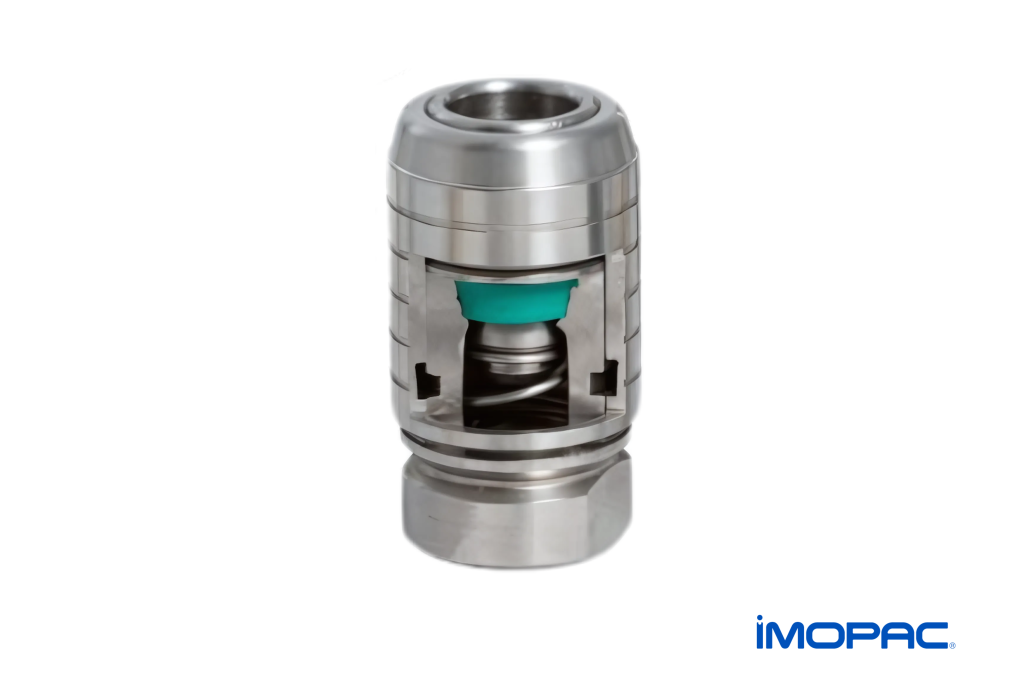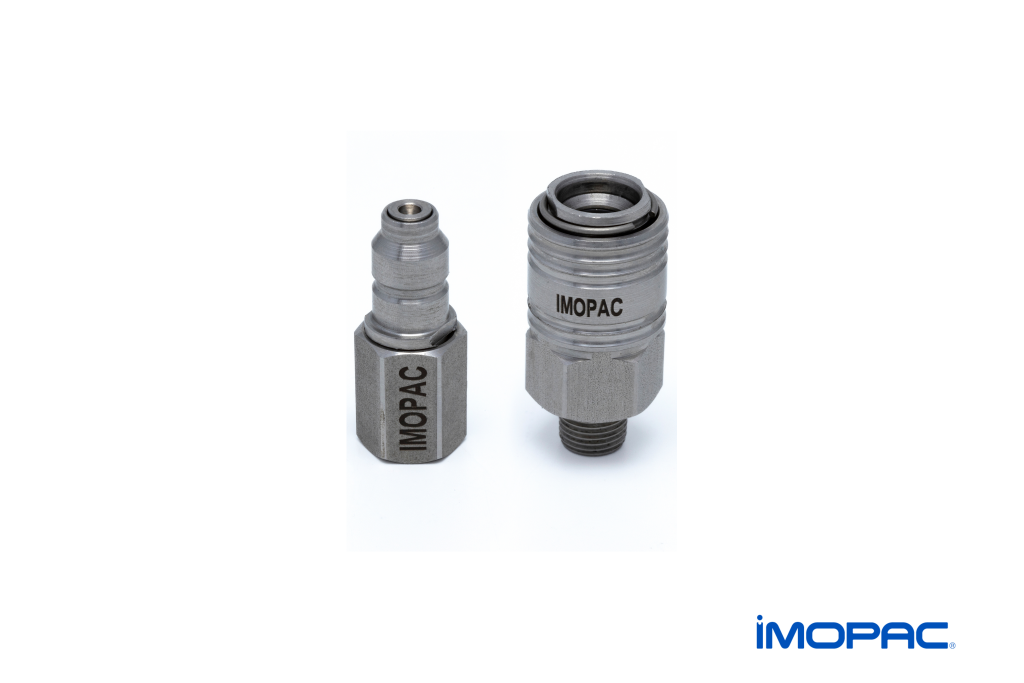One of the main questions when designing a circuit is which type of connections should be used. To clarify, let’s explore the types of sealing (obturación) in quick couplings and determine which one is most suitable depending on the specific application and influencing factors.

A clear example of a sectioned quick coupling where the valve or sealing component is visible.
Preliminary steps
Before diving in, let’s rewind: What is a quick coupling? What is it for, and how does it work?
Quick couplings are essential components in pneumatic, hydraulic, and fluid handling systems. Their main function is to enable the quick and secure connection and disconnection of a circuit without the need for tools. These couplings are critical in applications where maintenance, mobility, or tool changes require a fast response.
One of the most important aspects of a quick coupling is its sealing mechanism, i.e., how it seals the fluid flow when disconnected. There are three types of sealing in quick couplings, each with specific characteristics and applications, selected depending on system requirements:
- Single shut-off: A single sealing point that prevents leaks in the socket.
- Double shut-off: Two sealing points, avoiding leaks in both socket and plug.
- Straight-through (free flow): No internal sealing, allowing unrestricted flow.
What is a valve and how does it affect quick couplings?
A valve is a mechanism that controls fluid flow within a system. In quick couplings, valves function to either allow or block the flow of air, water, oil, or other fluids when the connection is engaged or disengaged.
In single and double shut-off systems, valves play a key role in sealing the circuit and preventing leaks. However, in straight-through connections, there are no internal valves, allowing uninterrupted flow.
Choosing the right type of sealing in a quick coupling depends on the sealing needs and flow characteristics of the system.

Example of a valve made in brass
Types of Sealing in Quick Couplings
🔹 Single Shut-Off
Single shut-off couplings have a check valve in the socket (female), which blocks the fluid flow when the plug is disconnected. This ensures that the circuit does not lose fluid or pressure during disconnection.
Key Features:
- One sealing point in the socket.
- Prevents leaks upon disconnection by sealing only one side of the circuit.
- Simple, reliable design suited for most conventional industrial applications.
Recommended Applications:
- Standard pneumatic systems with basic sealing requirements.
- Medium-pressure systems where leaks are important but not critical.
- Industrial processes with occasional connections.
🔹 Double Shut-Off
In double shut-off systems, both the socket and the plug have closing valves. This means the circuit remains sealed on both ends when disconnected, preventing any loss of fluid or compressed air.
Key Features:
- Two sealing points: one in the socket and one in the plug.
- Enhanced safety during disconnection, avoiding leaks on both sides.
- Lower pressure loss and improved sealing for demanding systems.
Recommended Applications:
- High-pressure circuits where any leak could impact performance.
- Systems with hazardous or expensive fluids.
- Industries with high safety requirements, such as pharmaceutical or food sectors.

🔹 Straight-Through (Free Flow)
Straight-through couplings have no internal valves, meaning fluid or compressed air flows freely when connected. When disconnected, the fluid is released, which must be considered based on the application.
Key Features:
- No internal sealing components.
- Allows maximum flow without restrictions.
- Ideal for systems where continuous flow is critical.
Recommended Applications:
- Systems requiring uninterrupted flow.
- Cooling or lubrication applications where constant circulation is needed.
- Hydraulic or pneumatic circuits with high flow demands.
Note: For circuits using straight-through couplings, a manual shut-off valve should be installed upstream to allow the circuit to be “closed” when needed.
Comparison Chart: Single vs Double Shut-Off vs Free Flow
| Feature | Single Shut-Off | Double Shut-Off | Free Flow |
|---|---|---|---|
| Number of valves | 1 | 2 | 0 |
| Pressure loss | On socket disconnection | Minimal or none | Total upon disconnection |
| Fluid flow | Moderate restriction | Higher restriction | No restriction |
| Recommended use | Standard applications | Demanding applications | High-flow systems |
How to Choose the Right Coupling for Your System
It will depend, as always, on the specific needs and the application. For example:
- For standard pneumatic setups such as workshops or basic air tools, single shut-off connections are the best option.
- If your fluid is critical and must not leak during disconnection, double shut-off systems will minimize losses.
- When maximum flow is required, such as in pressure washers or cooling systems, free flow couplings are the ideal choice.
If you have any doubts about which quick coupling is right for your system, check out our weekly updates or contact an expert using the info below: 👇🏻
🌐 www.imopac.es/en
📨 info@imopac.es
📞 +34 91 633 42 38